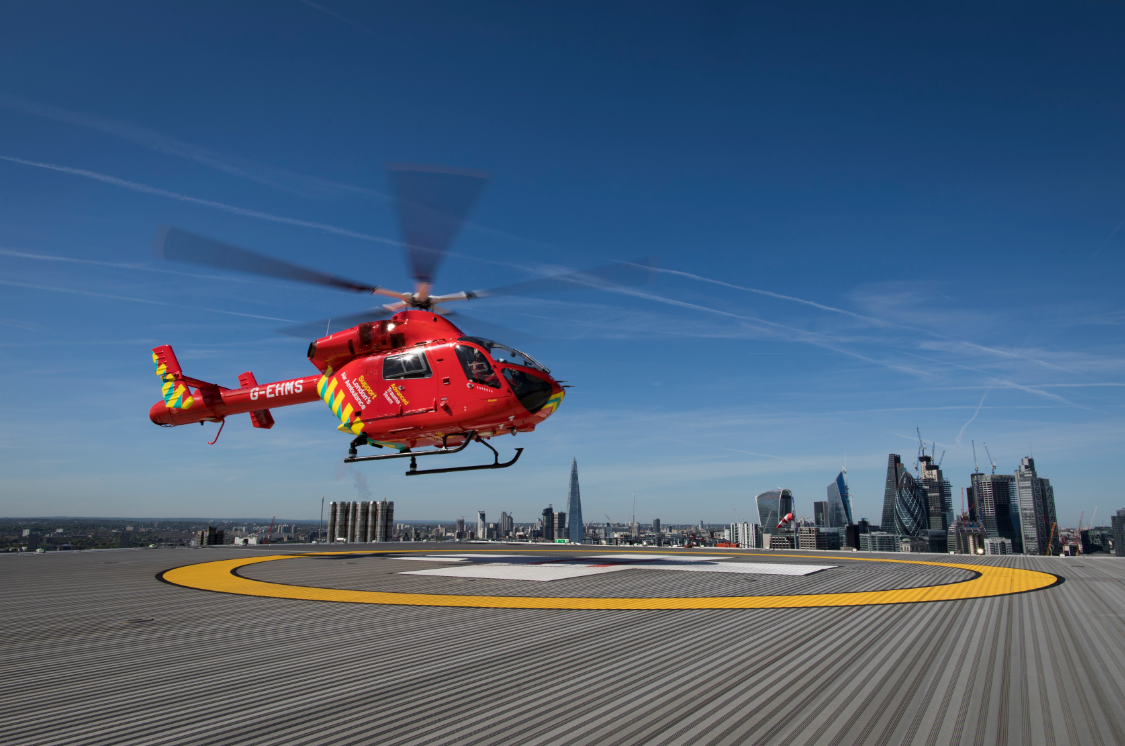A day in the life of the helipad

Trauma can happen to anyone, at any time. It means that we never have a typical day, but here is a flavour of what we do.
At around 06:45 our night team will handover to the day crew. Our medics are on duty for 12 hour shifts, so it is the start of a long and likely busy day. For the first hour the medics, usually consisting of a consultant, doctor and senior paramedic will go out in one of a rapid response cars ready to drive to a job if a trauma call comes in. In the meantime two of our fire officers will have arrived at the helipad ready to start their day ensuring helipad and aircraft safety. Without our fire officers we would not be able to get to our patients by air. Our two duty pilots fly the aircraft to The Royal London Hospital’s helipad from its overnight base at RAF Northolt at 08:00, where it will be stationed until sunset.
On average we attend around five patients every day. When the klaxon goes and we’re called to a job, we have a maximum of four minutes for our operational team to run to the helipad and get lifted in the aircraft. Even that can feel like a long time for our crew when they are waiting to get to a seriously injured patient. Every second counts when we are going to these jobs.
Within 11 minutes we can be anywhere in London within the M25. Our average flight time is about seven mins and we are able to land wherever we like in London, although of course there are some constraints. Size is the predominant one – the size we can land in is a square from one base line of a tennis court to the other. Bridges, box junctions, tops of multi-story car parks….we’ve landed in all sorts of places. The British Museum, Trafalgar Square, Piccadilly Circus and Horse Guards Parade are common places for us to land.
London’s Air Ambulance Charity works alongside the other emergency services, but adds an additional level of care provided by a senior trauma doctor and specially trained paramedic, for that small group of patients who really are very seriously injured. These patients are likely to die after the first few minutes of their injury without intervention at the roadside.
80% of the time our medics will stabilise the patient at scene, and then accompany the patient in a land ambulance to the nearest major trauma centre. If a patient requires it though we will fly them back to The Royal London. Once the aircraft touches down our fire officers will help move the patient onto a trolley and escort them down the ramp to the lifts. They will use the priority access card to get straight from the 17th floor down to ED, where the specialist teams there can take over. As soon as a patient is handed over to the Royal London team, our medics will return to the helipad ready for the next job.
The duty crew can’t leave the helipad whilst on call so in between jobs they will be in briefings, attending meetings and undergoing training in the complex roadside procedures they perform.
At the end of daylight hours our aircraft is flown back to RAF Northolt, our fire officers depart, and the day crew hand over to the night crew. Every day of the year we repeat this, ready and waiting to deliver our world class care to whoever may need it.
